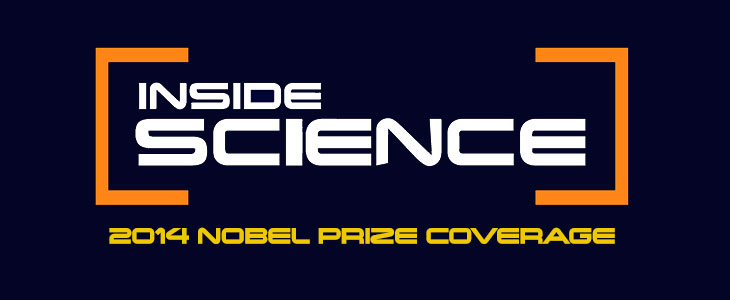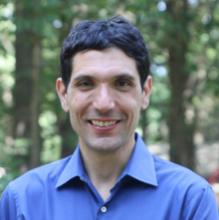My Prediction for the 2014 Nobel Prize in Physics

(Inside Science) -- In my earlier installment, I shared some insights from my experiences following the Nobel Prizes for over 20 years, including the fact that it really is a secret to those outside the Nobel committees until it is announced – save for a few apparent incidents in the peace and literature prizes. I also noted that physics prizes are occasionally awarded for practical advances instead of fundamental discoveries.
While we can't predict the exact winners for a given year, a few of my science-writing colleagues and I have detected what we think is a loosely recurring pattern for Nobel Prizes in physics: they seem to cycle through four major fields of physics. It's not a perfect cycle, but each of these fields seems to have its turn every few years. I would classify the recurring topics as being cosmology (the large-scale physics of the universe), quantum physics (the physics of the atom and its subatomic components, and electromagnetic radiation such as light), particle physics (the elementary building blocks of matter and energy), and condensed-matter physics, the field that I believe is due for a prize this year.
Condensed matter is the study of the properties of relatively dense ("condensed") forms of matter, such as solids and liquids, as opposed to gases, which are generally less dense. The building blocks of condensed-matter materials, such as atoms and electrons, tend to interact more strongly with one another and in a very complex fashion as compared to the atoms and molecules in gases. The physics of condensed-matter systems is rich, but also very complex. Superconductors, for example, are materials that can carry electrical currents without losing energy through electrical resistance as ordinary conductors do; it's a phenomenon that remains incompletely understood.
Based on my assumption that the prize will most likely be awarded for a topic related to condensed matter, my top prediction for this year's Nobel Prize in Physics is:
For the development of the light emitting diode (LED) and the diode semiconductor laser.
Yes, a Nobel Prize has already been awarded for the first laser, and its microwave equivalent, the maser, in 1964. And there were laser-related prizes in 1981 and 1997. But the first prize was for bulky laboratory lasers, not the varieties you now find in your home, in your DVD players and video game consoles, and in supermarket checkout counters. Those are semiconductor lasers, which produce light with the same kinds of semiconductor materials used to make computer chips.
But it's more than everyday familiarity that makes these lasers particularly important. They are also used in fiber-optic communications, enabling massive amounts of Internet data to be relayed around the world and exchanged between us through our computers, phones, and mobile devices. The physics of light transmission through fiber-optic cables was indeed recognized in the 2009 prize, but not the fundamental laser device itself: diode lasers, which rely on the same technology that gives us light-emitting-diodes. LEDs are important for all types of lighting nowadays, and in fact, are the most energy-efficient and environmentally friendly form of lighting, so I would predict that LED lights of the non-laser variety would also be acknowledged in a prize.
It's also worth noting that one of the topics cited in the 2000 physics prize was work on heterostructures, boundaries between two dissimilar semiconductor materials, which are key components in LEDs and diode lasers. However, I stick to my prediction that there will be a prize specifically devoted to LEDs and diode lasers.
There are many, many pioneers in this area. In fact four groups independently created the semiconductor laser and published results within one month of each other in 1962. But I'd single out Nick Holonyak (born in 1928), who developed the first visible-light LED at General Electric in the early 1960s, and Robert N. Hall (born in 1919), who demonstrated the first functioning semiconductor laser, also at GE. The third recipient would be Shuji Nakamura (born in 1950), who invented the first efficient blue LED, and then the first blue laser, while at Nichia Corporation in Japan in the 1990s.
Blue light has a shorter wavelength than other colors such as red and green, and therefore can be used to read and write smaller and smaller bits of information. Creating blue LEDs and lasers was a technologically difficult feat. While compact disc players were on the scene since 1982, Blu-Ray players and the Playstation 3, introduced in late 2006, were among the first consumer electronics devices to use these shorter-wavelength diode lasers.
Fun fact: Even though they're called Blu-Ray, the lasers in the players and Playstation are actually violet, an even shorter-wavelength color.
So that is my prediction. Here is a rundown of some other condensed-matter-related topics that are being discussed as candidates for Nobel Prize. In many cases, I explain the potential applications of these topics, rather than the often harder task of what they are.
· Topological insulators: no topic is more likely to frighten science writers on Nobel Prize morning than this one. Topological insulators allow the flow of electrons on the surface of the material, but are insulators inside the material. They can lead to electronic devices that might be candidates to make smaller, more powerful computers than conventionally possible. While traditional electronic devices simply use electrons as kinds of charged balls moving through circuits, topological insulators would use electron's bar-magnet-like spins to carry potentially more information in electronic devices.
· Carbon nanotubes: these ultra-strong tubes of carbon atoms have remarkable electrical and mechanical properties that promise lots of potential applications. They have yet to be acknowledged by the committee though other noteworthy carbon materials have been recognized in physics, such as graphene (atom-thick layers of carbon) in the 2010 physics prize and buckyballs (soccer-ball-like arrangements of carbon) in the 1996 chemistry prize.
· Ferroelectric materials: these are materials with desirable magnetic and electrical properties that form devices that can store information even when turned off. You'll find these in the zippy, ultrafast solid-state drives that are appearing in computers and mobile devices and replacing hard drives. Remember the first iPods?
· Negative-index metamaterials: these are structures with intricate patterns that can do things that don't usually happen in nature, such as bend electromagnetic waves in the opposite direction as ordinary materials. They can potentially create so-called "invisibility cloaks" that would divert certain wavelengths of light or other electromagnetic radiation to provide the illusion that the cloaked object is not present , at least when viewing the wavelengths affected by the cloak. I remember that when negative-index metamaterials were first announced, others in the scientific community voiced skepticism as they were initially hard to replicate. But since then, many labs around the world have succeeded in creating these structures.
· Photonic crystals: these are specially arranged materials, with regular geometric patterns that also play with light waves in interesting ways. There are even versions of these crystals for sound. They can cause waves of certain frequencies to cancel out, enabling the construction of devices that can block certain light frequencies, and also those that block light and allow only certain wavelengths to pass through, useful for certain coatings and sensors.
Of course, the Nobel committee can award the prize on any physics topic, and it could be one unrelated to condensed matter. One strong possibility includes extrasolar planets. Even though there is no prize for astronomy, this is a discovery that is very worthy, in my opinion. Another potential topic is for the transformation of subatomic particles known as neutrinos from one form to another; this neutrino oscillation is one of the big discoveries in physics in the last few decades. Another possible prize is the development of chaos theory. Another possibility is work on quantifying climate change, including human contributions to changing the climate, because of its major global and societal importance.
For the above predictions, and general insights about the Nobel Prizes, I am grateful to my former colleague Phil Schewe, to my Physics Today colleagues Charles Day (find his predictions for all the prizes here) and Steve Blau, Jason Bardi, the director of media relations at the American Institute of Physics, and to the Thomson Reuters group, which has issued its own predictions in recent years.
On Tuesday, after 5:45 a.m. EST, my predictions will seem either amazingly prescient or very silly. But it comes down to this: Next week is a time to celebrate remarkable examples of human knowledge and ingenuity.

